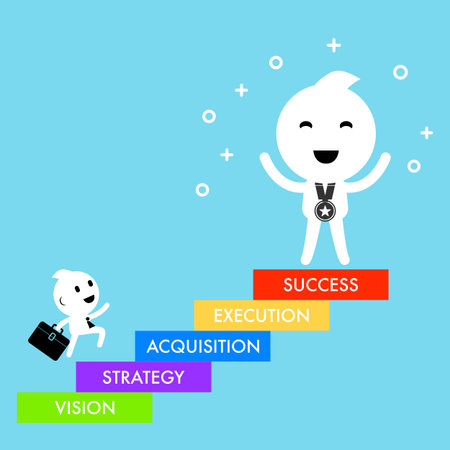Setting Clear Professional Goals
When it comes to annual planning for success at work, the first critical step is setting clear professional goals. Defining specific and measurable objectives is essential not only for personal growth but also for aligning with your company’s overall strategy. In the American workplace, goal-setting often follows the SMART framework—making sure each target is Specific, Measurable, Achievable, Relevant, and Time-bound. Start by assessing your current role and identifying areas where you want to improve or take on new responsibilities. Collaborate with your manager to ensure your goals contribute to both your individual development and the broader business objectives. Documenting these goals provides a roadmap for the year ahead and makes it easier to track progress during quarterly or mid-year reviews. By clearly outlining what you want to achieve and how it ties into the company’s mission, you set yourself up for a year filled with meaningful accomplishments and professional growth.
2. Evaluating Past Performance
Before you can effectively plan for the upcoming year, it’s essential to take a clear-eyed look at your past performance. This process involves analyzing last year’s outcomes to pinpoint your key wins, acknowledge challenges, and highlight areas where improvement is needed. By doing so, you create a solid foundation for strategic planning and set realistic goals that align with your strengths and opportunities for growth.
Reviewing Achievements and Shortcomings
Start by gathering data from the previous year—this might include completed projects, performance reviews, client feedback, sales reports, or productivity metrics. List out your major accomplishments as well as areas where results fell short of expectations. Use the table below to organize your findings:
| Category | Wins | Challenges | Areas for Improvement |
|---|---|---|---|
| Project Delivery | Completed 4 major projects on time | Missed 1 deadline due to resource constraints | Enhance project scheduling and resource allocation |
| Team Collaboration | Improved cross-department communication | Occasional misalignment on goals | Implement regular alignment meetings |
| Professional Development | Earned a new certification | Lack of time for additional training | Create dedicated learning hours each month |
Gathering Feedback
If possible, solicit input from colleagues, supervisors, or direct reports to get different perspectives on your performance. Feedback can reveal blind spots and provide actionable insights that might otherwise be overlooked.
Questions to Guide Your Evaluation:
- What were my most significant accomplishments this year?
- What obstacles prevented me from reaching certain goals?
- In what areas did I consistently excel or struggle?
Turning Insights into Actionable Steps
The ultimate goal of evaluating past performance is not just to reflect but to inform your future plans. Use your analysis to set specific objectives for the coming year, focusing both on leveraging your strengths and addressing areas that need improvement. This honest assessment will empower you to develop an annual plan that is grounded in reality and poised for success.

3. Building a Practical Timeline
One of the most effective ways to ensure your annual plans become a reality is to break down big goals into smaller, manageable milestones. Start by identifying your main objectives for the year, then map these out across four quarters. Assign specific targets or deliverables to each quarter, making sure they build on one another and drive steady progress. Within each quarter, set monthly checkpoints that serve as stepping stones toward your larger goals. This quarterly and monthly breakdown not only keeps you accountable but also allows you to adjust your approach based on real-time feedback and results. By structuring your year with a clear timeline, you create a practical roadmap that helps prevent last-minute scrambles and ensures consistent advancement. Remember, in American workplace culture, meeting deadlines and showing ongoing progress are highly valued—using this timeline method demonstrates both organization and proactive leadership.
4. Prioritizing Tasks and Resources
Effective annual planning requires a clear strategy for prioritizing both your tasks and the resources at your disposal. In most American workplaces, there’s an emphasis on maximizing productivity while avoiding burnout, so it’s crucial to determine which projects will drive the most impact and which skills will advance your professional growth.
Identifying High-Impact Projects
Start by evaluating all potential projects based on their alignment with your company’s goals, their potential return on investment (ROI), and how they fit with your own career aspirations. Consider discussing priorities with your manager or team to ensure you’re focusing on the right objectives. Use the table below to categorize projects:
| Project | Company Priority | Personal Growth | Estimated Impact | Priority Level |
|---|---|---|---|---|
| Project A | High | Medium | Significant Revenue Increase | Top Priority |
| Project B | Medium | High | Improves Workflow Efficiency | Secondary Priority |
| Project C | Low | Low | Minimal Impact | Defer/Delegate |
Selecting Skills to Develop
The best annual plans include targeted skill development. Identify which abilities will make you more valuable to your team and organization—think digital literacy, leadership, or industry-specific certifications. Allocate time throughout the year for training sessions, workshops, or mentorship opportunities.
Allocating Time and Tools Wisely
Your time is one of your most precious resources. Block off calendar slots for high-priority work, leaving room for unexpected demands. Leverage productivity tools like project management software (e.g., Trello, Asana), cloud storage, and communication apps to streamline collaboration and task tracking. Here’s an example schedule for balanced resource allocation:
| Activity Type | Weekly Time Allocation (%) | Main Tools Used |
|---|---|---|
| Main Project Work | 50% | Trello, Google Workspace |
| Skill Development | 20% | LinkedIn Learning, Webinars |
| Email/Meetings/Admin Tasks | 20% | Outlook, Slack, Zoom |
| Cushion/Unexpected Tasks | 10% | N/A (Flexible) |
The Bottom Line: Balance and Flexibility Matter Most
A successful annual plan is not just about listing goals—it’s about making intentional decisions on what deserves your attention and how to leverage the right tools. By prioritizing thoughtfully, you’ll be able to map out a year that’s both productive and personally rewarding.
5. Tracking Progress and Staying Accountable
Once your annual plan is set, the real work begins: consistently tracking your progress and holding yourself accountable. Establishing clear methods to monitor your results is critical for staying on course and ensuring you achieve your goals by year’s end.
Set Measurable Milestones
Break down your annual objectives into quarterly or monthly milestones. This step not only makes each goal more manageable but also provides regular checkpoints to measure progress. Use specific metrics—like sales numbers, project completion rates, or client feedback scores—to quantify your achievements and identify areas for improvement.
Leverage Digital Tools for Monitoring
Take advantage of productivity and project management tools commonly used in American workplaces, such as Trello, Asana, or Microsoft Planner. These platforms allow you to track tasks, set reminders, and visualize progress over time. Regularly updating your status in these systems keeps your plan front and center amid daily responsibilities.
Schedule Regular Self-Reviews
Build accountability by scheduling monthly or quarterly self-reviews on your calendar. Treat these check-ins like important meetings—review what you’ve accomplished, where you fell short, and how you can adjust moving forward. Document these reflections to see trends and make informed decisions about reallocating resources or shifting priorities.
Involve Your Team or Manager
If your goals align with team or organizational objectives, share your progress during one-on-ones or team meetings. In American workplace culture, transparency and open communication foster trust and collective responsibility. By discussing both wins and challenges with others, you gain support and valuable feedback that can help keep you motivated.
Create Accountability Partnerships
Consider forming an accountability partnership with a coworker who also has annual goals. Schedule periodic check-ins where you both share updates and brainstorm solutions to roadblocks. This mutual support system not only helps maintain motivation but also reinforces a culture of continuous improvement.
By actively tracking your progress and building accountability into your workflow, you transform your annual plan from a static document into a dynamic tool for professional success.
6. Adapting to Change and Overcoming Roadblocks
Even the most detailed annual plan will encounter unexpected changes and obstacles. In today’s fast-paced work environments, flexibility is essential for long-term success. When mapping out your year, it’s important to prepare flexible strategies that allow you to respond quickly to unforeseen challenges without losing sight of your main objectives.
Expect the Unexpected
No matter how thorough your planning process is, surprises will happen—whether it’s a shift in company priorities, a new project taking precedence, or changes in team dynamics. By recognizing that change is inevitable, you can approach disruptions with a problem-solving mindset rather than feeling derailed by them.
Build Flexibility into Your Plan
Instead of creating a rigid timeline, design your annual plan with built-in checkpoints and opportunities for reassessment. Schedule regular reviews—monthly or quarterly—to evaluate progress and identify areas where adjustments may be necessary. This proactive approach helps ensure that small setbacks don’t snowball into bigger issues.
Develop Contingency Strategies
Consider possible roadblocks in advance and outline contingency plans for high-risk areas. For example, if you’re working on a cross-functional project, think about what you’ll do if key stakeholders are unavailable or resources are delayed. Having these backup strategies ready can save time and stress when challenges arise.
Stay Solution-Oriented
When faced with obstacles, focus on solutions instead of dwelling on problems. Communicate openly with your team or manager about any roadblocks and be willing to adjust timelines or goals if needed. Demonstrating adaptability not only helps you achieve your objectives but also shows leadership qualities valued in American workplaces.
Ultimately, annual planning is about more than just setting goals—it’s about building the resilience to navigate whatever the year brings. By preparing flexible strategies and embracing change as part of the process, you position yourself for consistent growth and accomplishment throughout the year.

